exponentials and logarithms
1/105
There's no tags or description
Looks like no tags are added yet.
Name | Mastery | Learn | Test | Matching | Spaced |
|---|
No study sessions yet.
106 Terms
what is the equation for a polynomial graph?
y = axn
what is the equation for a exponential graph?
y = abx
what does a polynomial graph look like?
any graph with x to a degree, excluding x1 because that’s a linear graph
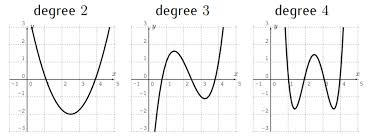
why isn’t a straight line graph considered a polynomial graph?
because it’s a linear graph. you don’t need to convert it using logs because it is already linear
what does an exponential graph look like?
y = 2x example
asymptote at x = 0
y - int = 1
tends to towards 0 as x decreases
grows without limit as x increases
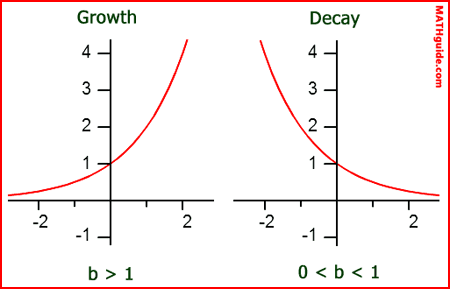
why is the y-int of an untransformed exponential graph always 1?
any value raised to the power of 0 is 1, and since x = 0 at the y-int, the y-int = 1
when is an exponential graph increasing (exponential growth)?
when k > 1
when is an exponential graph decreasing (exponential decay)?
when k < 1
why do we turn polynomial and exponential graphs into linear?
to be able to read the data clearly
polynomial → linear equation comparison
here
what is the y value for a polynomial graph turned linear?
log y
what is the gradient for a polynomial graph turned linear?
n
what is the x value for a polynomial graph turned linear?
log x
what is the y-int (c) for a polynomial graph turned linear?
log a
what is the y value for an exponential graph turned linear?
log y
what is the gradient for an exponential graph turned linear?
log b
what is the x value for an exponential graph turned linear?
x
what is the y-int (c) for an exponential graph turned linear?
log a
exponential → linear equation comparison
here
what are the similarities and differences between polynomial and exponential graphs turned linear?
similarities
y = log y
c = log a
differences
for a polynomial graph;
gradient = n
x = log x
for an exponential graph;
gradient = log b
x = x
which graph turned linear has a gradient of n?
polynomial
which graph turned linear has an x value of log x?
polynomial
which graph turned linear has a gradient of log b?
exponential
which graph turned linear has an x value of x?
exponential
which graph turned linear has a y value of log y?
both - polynomial and exponential
which graph turned linear has a c value of log a?
both - polynomial and exponential
what does ekx integrate to?
kekx
what does ekx differentiate to?
kekx
logan = ?
logan = x
ax = ?
ax = n
when a is not equal to 1
when is ax = n valid?
when a doesn’t equal 1
how do we rewrite logs?
logan = x
ax = n
what are the logarithm laws?
1. multiplication law
logax + logay = logaxy
2. division law
logax - logay = logax/y
3. power law
loga(xk) = klogax
what is the multiplication law?
logax + logay = logaxy
logax + logay = ?
logax + logay = logaxy
what is the division law?
logax - logay = logax/y
logax - logay = ?
logax - logay = logax/y
what is the power law?
loga(xk) = klogax
loga(xk) = ?
loga(xk) = klogax
what are the special cases for logs?
loga (1/x) = loga(x-1) = -logax (power law when k = -1)
logaa = 1 (a > 0, a doesn’t = 1)
loga1 = 0 (a > 0, a doesn’t = 1)
what is the power law when k = -1?
loga (1/x) = loga(x-1) = -logax
logaa = ?
logaa = 1
when is logaa = 1 applicable?
(a > 0, a doesn’t = 1)
when is loga1 = 0 applicable?
(a > 0, a doesn’t = 1)
when is loga (1/x) = loga(x-1) = -logax applicable?
when k = -1
loga1 = ?
loga1 = 0
can you take a log of a negative number?
no
f(x) = g(x),
logaf(x) = ?
logaf(x) = logag(x)
what does the graph of y = ln x look like?
a reflection of the graph y = ex in the line y = x
goes through (1, 0)
doesn’t cross the y-axis
y-axis asymptote of y = ln x, meaning ln x only defined for positive x values
ln x slowly increases without limit as x increases
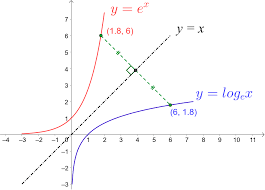
what is y = ex an asymptote to?
x-axis
what is y = ln x an asymptote to?
y-axis
what is the x-axis asymptotic to?
y = ex , exponential graph
what is the y-axis asymptotic to?
y = ln x , logarithmic graph
In x = ?
In x = logex
eln x = ?
eln x = ln (ex) = x
how do we reverse e functions?
how do we reverse log functions? base of e, base of 10, base of a (i.e., another number)
if the graph y = ex has a y-int of 1 (standard exponential graph), what is the x-int of the y = ln x graph? why?
(1,0), because the y = ln x graph is a reflection of the y = ex graph in the line y = x

what is an exponential function?
f(x) = ax , where a is a constant
what determines how steep an exponential graph is?
the size of it’s ‘a’ value -
for increasing graphs, the larger the more steep
for decreasing graphs, the smaller the more steep?
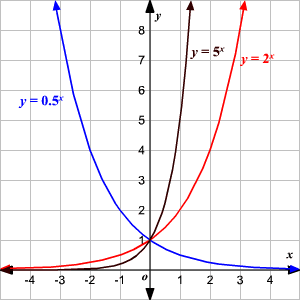
what does the untransformed graph of the function y = (1/2)x look like?
decreasing
y-int at (0,1)
reflection of y = 2x in the y-axis
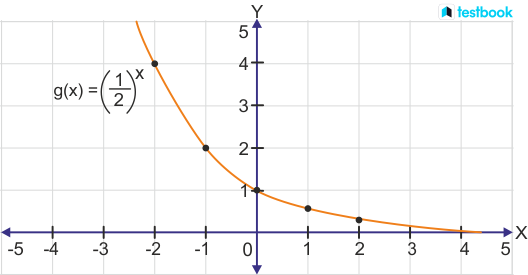
what does the graph of the function y = (1/2)x-3 look like?
f(x) = (1/2)x , so y = f(x - 3)
translation by vector (3, 0), i.e., +3 to x value
to find y-int, substitute x = 0 (x value at y-intercept) into function
y = (1/2)0-3 = 8. y-int = (0, 8)
how do you turn a polynomial graph to a linear one?
start with non linear relationship, y = axn
take log 10 of both sides
use multiplication law
use power law
compare to straight line equation;
log y = n log x + log a
y = m x + c
how do you turn an exponential graph to a linear one?
start with non linear relationship, y = abx
take log 10 of both sides
use multiplication law
use power law
compare to straight line equation;
log y = log b x + log a
y = m x + c
why is the integral and differential of an exponential graph y = kekx?
because exponential functions of the form f(x) = ax have a special mathematical property that means their f’(x) and f(x) functions are a similar shape to each other. when a = e, the gradient and original function are identical
what is ‘e’?
a value of ‘a’, approximately 2.72, (3 s.f) where the gradient function is exactly the same as the original function
how do you sketch the graph y = e2x ?
here 14.2 example 4 a
how do you sketch the graph y = 10e-x ?
here 14.2 example 4 a
how do you sketch the graph y = 3 + 4e(1/2)x ?
here 14.2 example 4 c
how do you sketch an exponential graph?
here
what is proportional in exponential modelling?
for ex, the rate of increase ∝ the value of the situation being modelled
for e-x, the rate of decrease ∝ the value of the situation being modelled
what does ‘solving’ a exponential mean?
finding the unknown value, usually x
what is a logarithm?
the inverse of exponential functions
what is ‘a’?
the logarithm base
negative y, flipped in x-axis
how to solve mixed exercise 3a and b, rewriting as a given function
how to solved mixed exercise 5a, rewriting into quadratics using substitutions
how to answer mixed exercise 8d, raising e to the power of 0
mixed exercise 8e, ask zanas
mixed exercise 9d, does it always tend towards 0 when t tends to infinity? ask
mixed exercise 9e, what does graph look like? why is it asymptotic at 100?
mixed exercise 9f appropriation of graph
mixed exercise 10a, writing straight line graph
why can time be ≥ 0?
time cannot be negative because you can’t go back in time
mixed exercise 11d
how do you answer this question?
mixed exercise 13a
mixed exercise 13c
mixed exercise 14c, writing in the right unit
the whole challenge.. ask someone cuz i dont fucking know
exercise 14g 4
exercise 14g 5d
how can you tell where the asymptote is on an equation?
y = AeBx + C
C is where the asymptote is
14g challenge, how do we know it goes through the origin?
how do you solve this 14g 1a, solving equations
exercise 14g 4, exact solution means leave it in ln2? ask someone
can you have a log base 0?
no !!!
14d 6a how do you answer this
14d 7b justify why logaa = 1
what are some assumptions we can give for exponential modelling?
assumes the growth / decay is exponential
other factors would affect population size over time
goes out of the range
what is the ‘long term prediction’ for exponential modelling?
as t → ∞, et → 0, therefore e value = 0